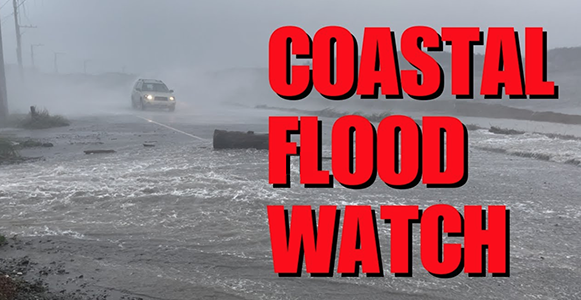— by Margie Doyle —
(Disclosure: I live across the street from 27 Aeroview in a lot also zoned Service/Light Industrial. My husband has lived on the island since 1982 and in this house since 1989).
I’ve always loved living on Orcas, because for good or ill, you know most of the people you deal with on a daily basis. Just yesterday I got a note from my island doctor commenting on the results of a test done last month and making personal recommendations — just one example of the extra (or should I say “normal”?) connections people make and cherish on the island.
As a child, I lived in the same city neighborhood from 3 to 18 years of age — we rode bikes, played street games, delivered papers, put out house fires, partied at weddings and wakes, and welcomed new babies in that city block of 30 homes, 60 kids, retirees, low-income, doctors, lawyers, professors, accountants, teachers, nurses, and insurance agents among us. That was then in the 50s and 60s.
This is now. In Eastsound on Seaview Street, from Mt. Baker Road to Transylvania, bordering the airport, there’s a very similar mix of residents and families to the neighborhood I grew up in. We walk, bike, stroll our kids, garden, pay our mortgages or rent, and head out to work in the mornings and come home at night to our homes and families.
One big difference is that this “Seaview” neighborhood has, right in the middle of the residences, a service-light industrial zone. The lot at 27 Aeroview Lane has been vacant for at least the last 17 years; it is directly adjacent to the airport on the east side, to Seaview Street on the west side, to Wildwood and Aviator housing complexes on the north side, and to our home and cabinet shop on the south side.
Within 300 feet of the property line, OPAL’s first neighborhood, OPAL Commons, has their community garden. Further north are the 18 homes owned by our local Community Land Trust, our “affordable housing” agency. In the last three years, OPAL arranged for four homes to be barged to Eastsound and placed on lots between Seaview and Mt. View streets, providing more affordable homes for retirees and young families to live.
Recently the County installed a 30,000 gallon fuel tank for emergencies in the county public works lot off Mt. Baker Road, also off Seaview Street to the east. In 2015, there were two fuel leak accidents at the former VanderYacht propane lot at the north end of Seaview Street, and the neighborhood had to be evacuated. It’s important to note, that without the county’s knowledge or approval, a septic waste disposal tank was also on that location.
That’s the background and helps explain why the Seaview neighbors (which include Mt. View and Blanchard streets to the west and the airport hangars to the east) are so alarmed at the prospect of InterIsland Petroleum installing a 30,000 gallon propane tank (which owner Don Galt admits is a flammable and explosive fuel) right in the heart of our neighborhood.
I’ve just returned from a week-long vacation where, in Halifax, Nova Scotia, I visited the Maritime Museum and learned more details of the sinking of the “unsinkable” Titanic in 1912, and the lesser-known explosion of Dec. 6, 1917 when a ship loaded with explosives collided with a ship laden with refugee provisions in Halifax harbor. Within 20 minutes, explosions were set off that leveled an area with a 1.5 mile radius and killed nearly 2,000 and maimed or blinded 9,000 people. I was reminded that with the best of safeguards, accidents happen.
As a Seaview neighbor said to county officials and Don Galt recently, “Many of our neighbors are united over concerns with having your company use the proposed property for a propane fueling operation. I believe we all appreciate and acknowledge your efforts to make this a safe, efficient operation. As we all know, all the safety protocols in the world will not prevent an accident. This is why we call them accidents. Human error, laziness, being in a hurry, deterioration of equipment, forgotten maintenance, or whatever it may be, the chance of a heavy spill or fire is always possible.
“It is apparent that the Seaview/Aeroview and adjacent neighbors are strongly against this project. We have developed a quiet, safe, friendly neighborhood that we plan to spend the rest of our lives enjoying. This project not only jeopardizes the safety and tranquility of the neighborhood, but we fear a decrease in property values and increased expenses that we may incur from maintenance and upgrades to the existing infrastructure…. It does not matter that you comply with national, state and county regulations, none of these stipulations will prevent an incident or loss of life.”
For over 10 years I’ve attended the monthly Eastsound Planning Review Committee meetings almost every month. Many times, I’ve been the only one there as this county advisory all-volunteer group meets to safeguard the character and safety of our Urban Growth Area (UGA) and beyond. Through the years and various committee members, there has been a focused effort to guide growth and development through the lenses of our safety and our modern rural character. They have studied the installation of a propane tank and distribution center (trucks driving through the neighborhood and filling with propane) and issued the following statement to county officials:
“While bulk fuel storage facilities are allowed upon approval of a conditional use permit in the service and light industrial designation, the EPRC is concerned about locating a large fuel tank in close proximity to relatively high density residential neighborhoods and to airport facilities. Residential uses are located on all sides of the proposed use. Airport facilities with fuel storage are also located adjacent to the site to the east. Ingress and egress is limited to a single road. Should there be an explosion, fire, or other safety-related mishap, the ability to evacuate residents and bring in emergency personnel could be severely restricted due to the single point of ingress and egress….
“Due to the proximity to residential uses and a single point of ingress and egress, the EPRC found that the project would be more appropriately located away from higher density residential uses. The EPRC recommends that the applicant demonstrate provisions for safety measures to ensure protection of people living in the nearby neighborhoods, including emergency provisions for evacuation and access by emergency personnel. If such provisions can not be adequately demonstrated, the application should be denied.”
Comments from the Fire Marshal
In a memo dated June 27, 2017, the Fire Marshal stated that the proposal is subject to the requirements of Chapters 50, 57, and 61 of the IFC, and NFPA 58 as a “bulk plant”. He recommended seven conditions of approval that would ensure compliance with the specific codes. These include:
1) Prior to any construction activities on the site, the following is required:
a) A building permit that includes construction plans for the foundation and the container shall be submitted and approved by the Department of Community Development.
b) An operational fire permit is required to be submitted to and approved by the Fire Marshal for the Bulk Plant. A written operations and maintenance manual (O&M) meeting the requirements of NFPA 58 Chapter 14 shall be submitted to the Fire Marshal’s Office prior to an operational permit being issued. The O&M requirements include Fire Response.
c) Installation of the container, the container specifications and valves, filling station, and equipment on trucks utilizing the site shall meet the requirements of National Fire Protection Association (NFPA) 58 and the IFC.
2) The container shall meet the setbacks from property lines and public ways per IFC Table 6104.3. A 30,000 gallon container is required to be setback at least 50 feet from property lines and public ways per IFC Table 6104.3.
3) A designated fire truck turn-around/fire land must be provided on site.
4) Bollards or other approved collision prevention devices must be installed in compliance with NFPA 58 and the IFC.
5) Prior to Occupancy, a Fire and Life Safety Inspection is required. This will be conducted after or concurrently with acceptance testing o the site in the presence of the Fire Marshal and a designee of the Orcas Island Fire and Rescue Fire Chief.
6) Prior to occupancy, hydrants shall be installed meeting the requirements of SJCC 13.08 including:
a) A hydrant installed on the corner of Seaview and Aeroview to fulfill the hydrant distance minimums outlined in SJCC 13.08.080.
b) The hydrant must be tested and demonstrate that it can meet the commercial hydrant flow for this site per SJCC 13.08.010 which is 500 gallons per minute for 60 minutes.
7) If the property is to be gated or fenced, a Knox key box system shall be installed allowing firefighters access to the site.
“He also made an additional recommendation:
“A fire suppression system to apply water to cool the container in the event of fire is recommended. This would supplement the efforts of firefighters and would likely reduce the magnitude of an emergency, should one arise. This recommendation is due to Orcas Island Fire District’s dependence on volunteer firefighters, in conjunction with the consideration that mutual aid is not readily available due to our island location. (Bold chararcters added). This system should be designed in such a manner as to allow firefighters to unlock a valve to a suppression system and activate the water cooling system.”
While these considerations would go a long way to safeguard the neighborhood in the event of a spill, fire, or God forbid, explosion of this 30,000 gallon tank, my 17 years on the island have shown me that enforcement and inspection of conditions is far from perfect. Enforcement is “complaint-driven” county officials have said time and again, while despairing of the lack of personnel to inspect and enforce compliance.
Is it fair for the Seaview neighbors to live under the threat of such an accident? Is it fair for the Seaview neighbors to have the onerous task of monitoring safety requirements issued by county authorities as residents raise their families and hold down their jobs? Is it fair to ask our neighbors in their homes, their “castles,” to sacrifice their sense of security so that an island business, dangerous by its very nature, can operate in the midst of us? Is that what “rural island character” means to county officials?
**If you are reading theOrcasonian for free, thank your fellow islanders. If you would like to support theOrcasonian CLICK HERE to set your modestly-priced, voluntary subscription. Otherwise, no worries; we’re happy to share with you.**








Margie,
Thank you for your detailed statement on this issue
So this project would offer competitive cost of propane ?
We all need to stand against this project !
Safety is more important than money
Such thoroughness, Margie. Thank you.
Of course your concerns are are valid and reasonable. They should be addressed and the propane tank re-located.
Then, I’d like the EPRC and the Island as a whole to think about my comments regarding the Opal affordable housing picnic tomorrow in the context of:
“Density: its present and future challenges to Orcas’ residents and habitat.”
Margie’s very valid concern is just the beginning signs of what’s to come by overtly encouraging an increase in the density of Orcas’s population.
Populations dont increase without needing an equal increase in various forms of infrastructural support–like a 30,000 gallon take of propane. That’s just one example of many similar changes to come.
Margie’s point rightly raises the potential human harm; there’s also the potential harm to Orcas’ habitat by accidental leaks —all brought about by NEED…which is all brought about by an increase in population.
The slippery slope lays before us.
Margie’s been here for decades and both the neighborhood she was raised in and the one she describes on Orcas sound wonderful. But, at some point we need to let reason into the discussion and talk seriously about density, irrespectove of politics or class.
This is about science; it’s about density and survival and what makes for a healthy, ecologiically sound habitat.
Chris Graham, yes but this density is allowed, in fact Required under the Growth Management Act. Alas, our Commissioners refused to get out of the GMA when there was the opportunity to do so a couple of years ago. It is a crime to ruin this lovely Island by placing over one half of the population in Eastsound. While it may still feel peaceful in other parts of the Island, Eastsound residents are left out of the protections of Space. The Great Land boom in the early nineties had developers salivating to buy up the Eastsound land and rid the town of the Wetland, most Wildlife, including Migrating Bird Species protected under the International Migratory Bird Species Act.
You can be sure that those who make the decisions don’t live cheek by by jowl with their neighbors or next to dangerous industrial fuels and chemicals.
The world is trying to cut fossil fuel use as fast as it can, to reduce climate impact. Here in the islands, people have been shifting away from fossil fuels to cleaner lower cost alternatives.
Most homes in the county heat with electricity. Propane now only serves 13% of the market, and it is shrinking as islanders switch to super efficient heat pump heaters and water heaters. They cost about 75% less to heat a home with an electric heat pump compared to propane. The Odd Fellows put a ductless heat pump in at the Hall two years ago, replacing a propane heater. Their total energy bill is now a small fraction of what it was before.
I work with OPALCO on energy efficiency and renewable energy initiatives. New cleaner lower cost forms of energy and efficiency are our future. Seems like there are much better ways to invest in our community than building a container for a dying fossil fuel industry.
Thank you, Margie, for this wonderful example of what good community journalism is all about, and why it’s so important. We need more stories like this to inform critical public policy decisions.
Excellent comments, Margie. The area is clearly residential and incorrectly designated Service Light Industrial. It is unconscionable to place a 30,000 gallon propane tank smack dab in the middle of surrounding residences.
Spirit Eagle and Jay,
Its heartening to read your words but sad to think of what was lost in Eastsound. I’m not sure how the propane tank can continue to be placed there with the uprising in the neighborhood.
Jay, I met your mother at my home shortly before she passed away. Pat Littlewood brought her to our home. She visited Eduardo (the Artist). She was an amazing and talented artist and a woman of unusal strength and character. This was so immediately apparent. I can’t recall having spent so little time with a person who had such a lasting impact on me. As for your comment, we plan to move towards solar panels and a hybrid system with Opalco. Alternative energy is here to stay and advance. Though vested interests and lobbyists remain strong in the fossil fuel industry, they’re finally being challenged by reinforced negative public perceptions.
In addition to concerns about the placement of a 30,000 gallon propane tank on Seaview, I wonder what safety considerations – if any – are being made by the county regarding the new, potentially more explosive, highly vulnerable gasoline tank in front of the public works building as well as San Juan Propane and InterIsland Petroleum trucks and tanks? All of these are on Mount Baker Road and affect the Seaview neighborhood. In addition, InterIsland Petroleum trucks and Orcas Septic Service vehicles, septic tanks and port-a-potties remain adjacent to one another at the north end of Seaview Street. (IF these businesses went through a permit process, those who live immediately across the street were not notified of such action.) It seems that this neighborhood has become a ticking time bomb for some level of disaster, with or without the addition of a 30,000 propane tank. Does the County have any regard for this situation?
NOTE: InterIsland Propane, the entity requesting the propane tank permit, is separate and distinct from InterIsland Petroleum which has facilities on Mount Baker Road.
The hearing regarding the InterIsland Propane permit on Aeroview is scheduled for July 13th with this portion likely to start approximately 10:30 am. It will be live-streamed at http://www.sanjuanco.com.
Thanks for the kind words Chris. Mom was old school cool. We miss her.
As you consider solar options, think about the forthcoming community solar program OPALCO is developing. If your lot is shaded, the upfront costs prohibitive, or the maintenance more than you want to take on, subscribing to a share of the community solar array may be a good solution for you.
And do consider doing energy efficiency improvements first – it is the lowest cost per kWh (a fraction of the cost of solar). The less energy you use, the smaller your electricity needs whether it comes from OPALCO or solar. If you need help thinking about this, reach out to me or the excellent staff at OPALCO member services. Ask for Jon or Lindsay to explore solar options, home energy assessments, and energy efficiency options and rebates. Less is more!
Am I correct that the County raised a major issue a few years back at the Craftsman’s Corner about a tiny propane tank being there in the airport overlay?
I’m also not at all sure how the on-site precautions address propane trucks driving up and down what has become a residential street with lots of kids.
So what was the important occasion that caused the hearing examiner hearing to leave the council hearing room before the propane storage concerns were heard? Someone didn’t want the public to hear? I cant wait to hear, must’ve been important
Putting all of the emotion aside, the reality of this situation is such that unless the County Comprehensive Plan does NOT allow such a use in this Light Industrial Area, the hearing examiner is compelled to follow the ordinance and approve the Conditional Use Permit. It is the conditions that will determine if this is a cost effective proposal.
Paul Kamin of EWUA presented a thorough, well prepared argument against approval of this CUP. Issues of fire flow (water), evacuation plans, and issues related to large truck traffic in a congested neighborhood suggest that this is an unacceptable proposal.
I absolutely oppose approval of this CUP. If it is approved, even with severe conditions, the neighbors and the Eastsound community should be prepared to appeal that decision. Too, the community, through the EPRC, needs to QUICKLY review the allowable land uses throughout the UGA to ascertain if other no longer acceptable uses of land parcels exist in Eastsound.